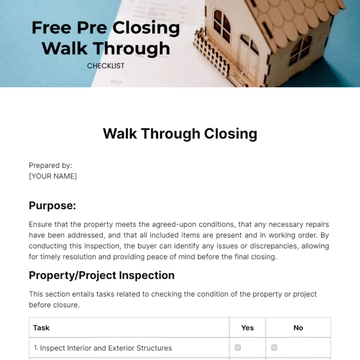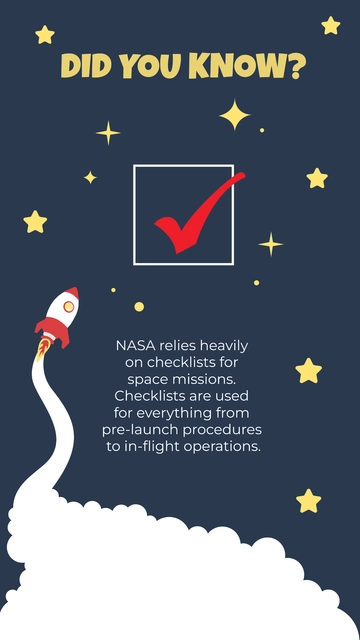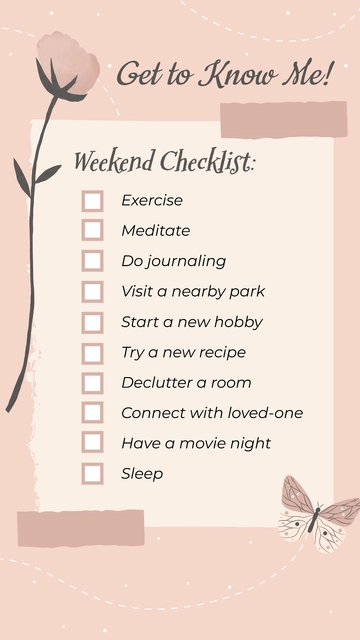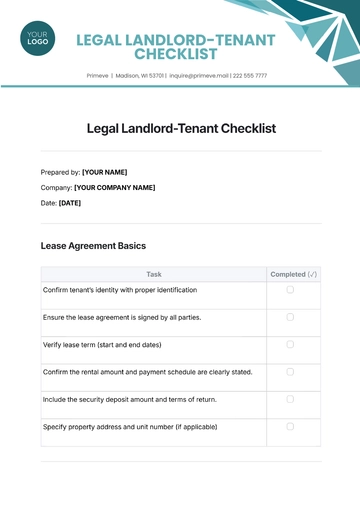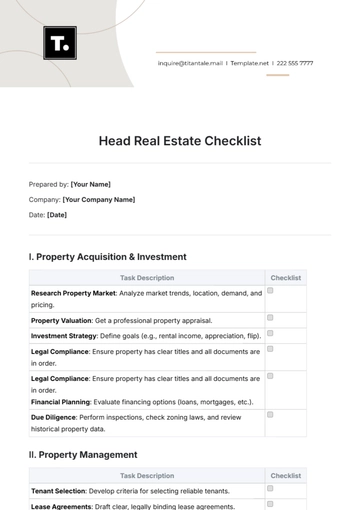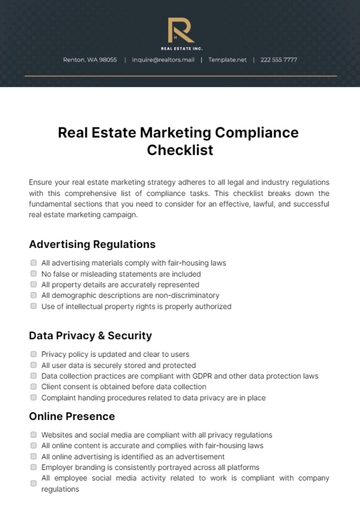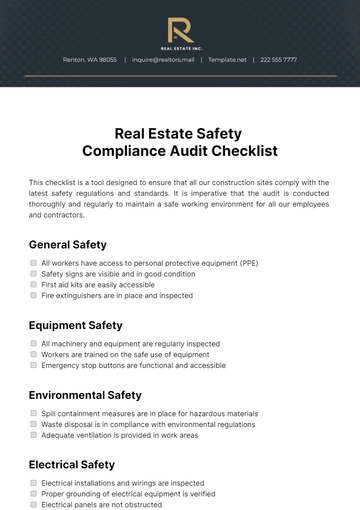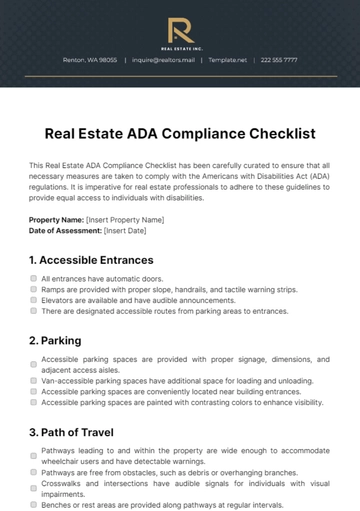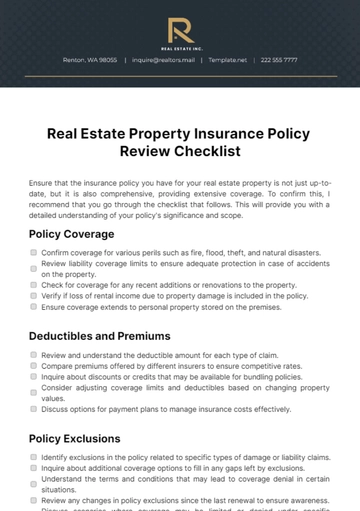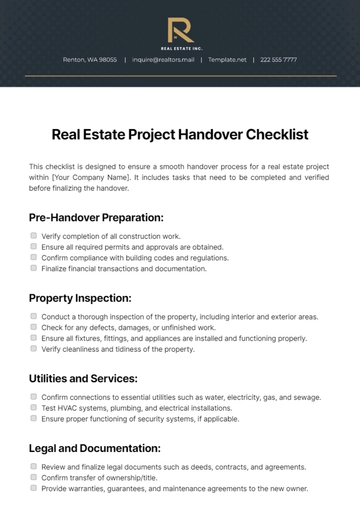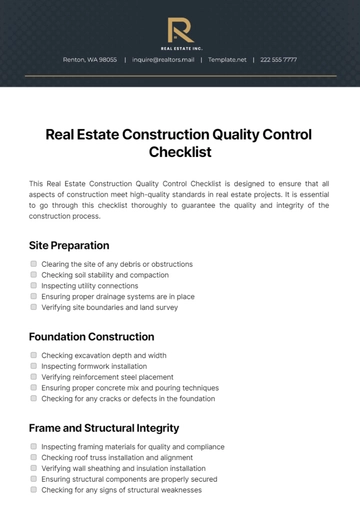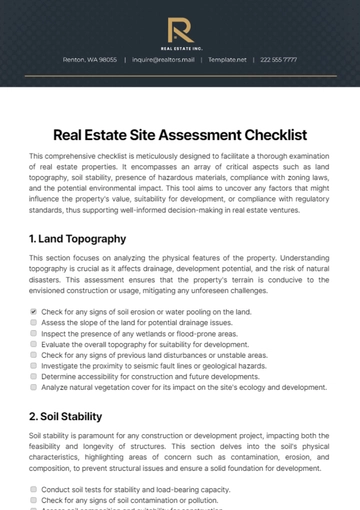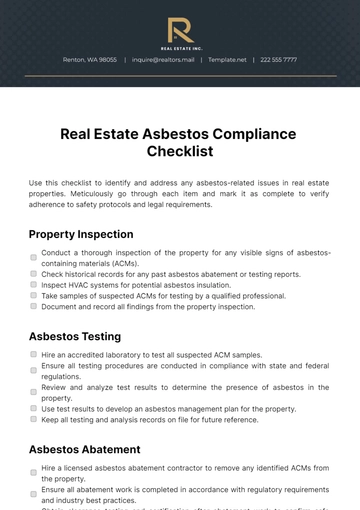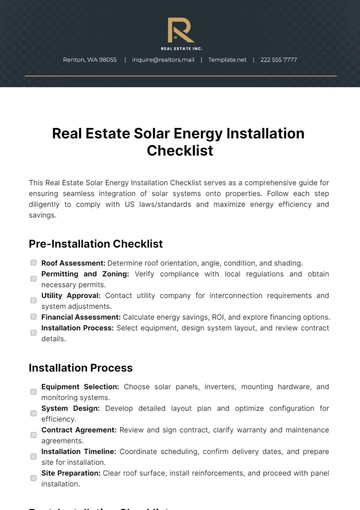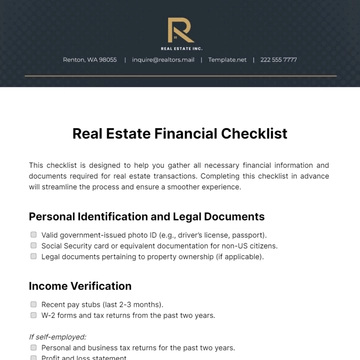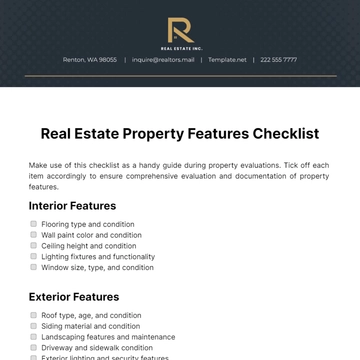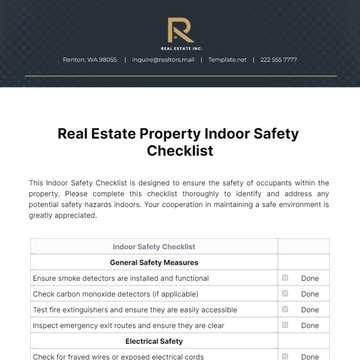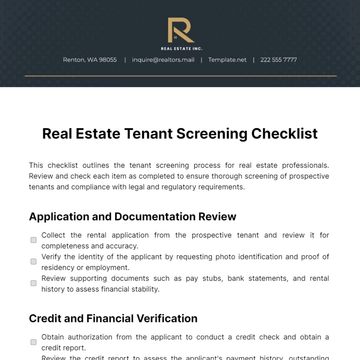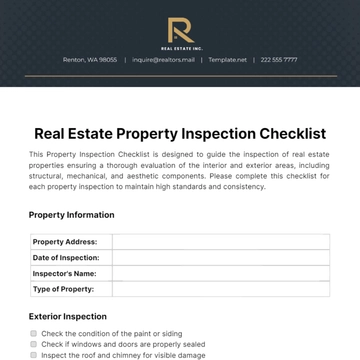Free Real Estate ADA Compliance Checklist
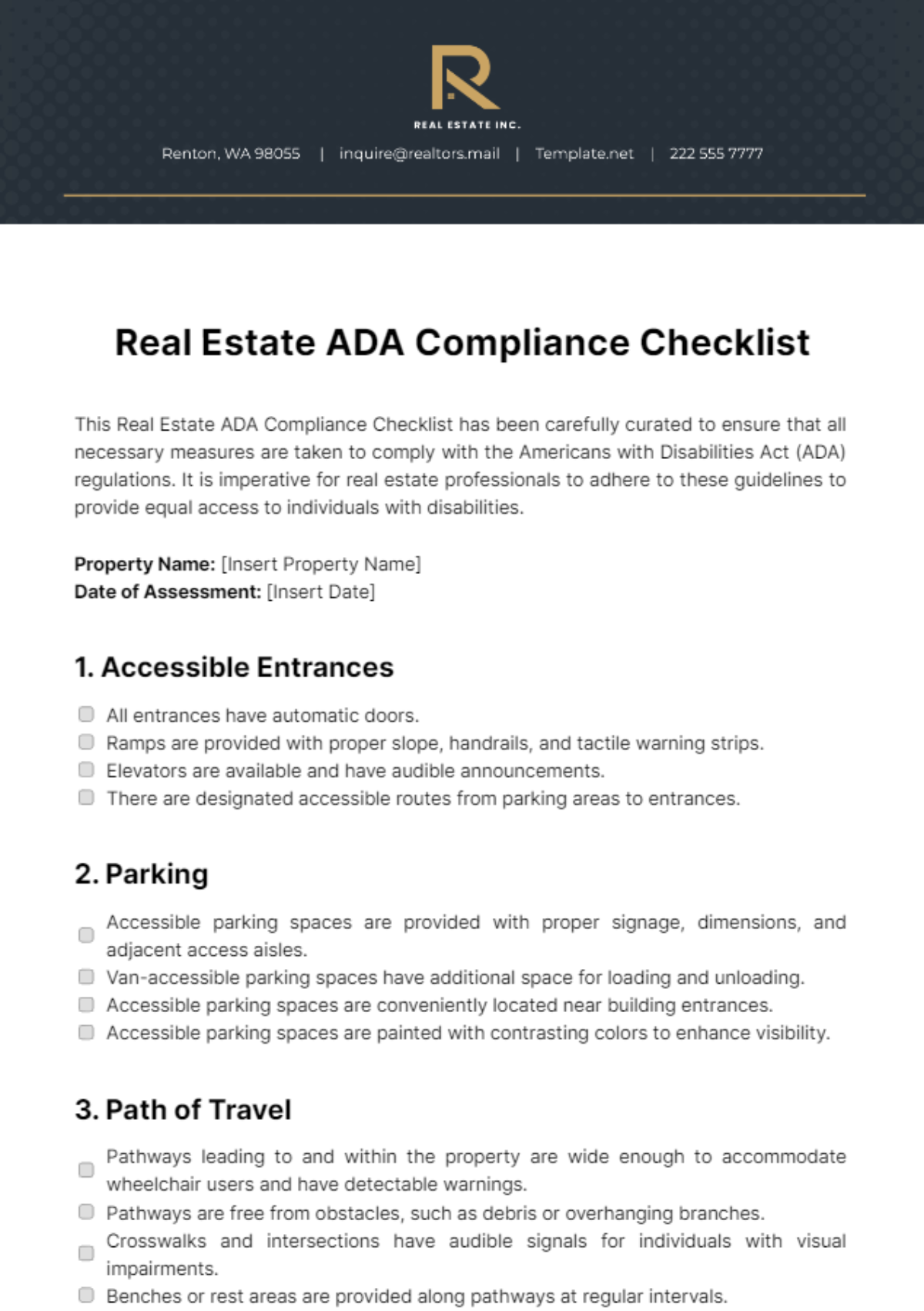
This Real Estate ADA Compliance Checklist has been carefully curated to ensure that all necessary measures are taken to comply with the Americans with Disabilities Act (ADA) regulations. It is imperative for real estate professionals to adhere to these guidelines to provide equal access to individuals with disabilities.
Property Name: [Insert Property Name]
Date of Assessment: [Insert Date]
1. Accessible Entrances
All entrances have automatic doors.
Ramps are provided with proper slope, handrails, and tactile warning strips.
Elevators are available and have audible announcements.
There are designated accessible routes from parking areas to entrances.
2. Parking
Accessible parking spaces are provided with proper signage, dimensions, and adjacent access aisles.
Van-accessible parking spaces have additional space for loading and unloading.
Accessible parking spaces are conveniently located near building entrances.
Accessible parking spaces are painted with contrasting colors to enhance visibility.
3. Path of Travel
Pathways leading to and within the property are wide enough to accommodate wheelchair users and have detectable warnings.
Pathways are free from obstacles, such as debris or overhanging branches.
Crosswalks and intersections have audible signals for individuals with visual impairments.
Benches or rest areas are provided along pathways at regular intervals.
4. Doorways and Passageways
Doorways, corridors, and passageways have minimum clear widths as per ADA standards.
Doors have appropriate hardware, including lever handles or automatic openers.
Thresholds are flush with the floor to facilitate smooth passage.
Swinging doors have adequate maneuvering clearances on both sides.
5. Restrooms
Restroom facilities are accessible, including proper door width, grab bars, and accessible sinks.
At least one accessible toilet stall is provided, meeting ADA requirements.
Restrooms have lever-operated faucets and flush controls.
Restroom mirrors are mounted at appropriate heights for wheelchair users.
6. Elevators and Lifts
Elevators or lifts are accessible and comply with ADA standards.
Elevator controls are within reach and properly marked with tactile and visual indicators.
Elevators have visual and audible indicators for floor announcements.
Emergency communication devices are available inside elevators.
7. Signage
Signage throughout the property includes tactile signs and braille where necessary.
Signage is located at appropriate heights for individuals with disabilities.
Contrast between signage and background meets ADA requirements for visibility.
Directional signage includes pictograms for universal understanding.
8. Communication Access
Auxiliary aids and services are provided for individuals with hearing impairments, such as hearing loops or captioning services.
TTY phones or alternative communication devices are available upon request.
Staff are trained in basic sign language communication.
Assistive listening devices are available in public meeting areas.
9. Service Counters
Service counters and checkout areas are accessible to individuals with disabilities.
Lowered sections are provided for wheelchair users where applicable.
Service counters have a clear space for approach and transactions.
Staff are trained to provide assistance in completing transactions for individuals with disabilities.
10. Emergency Evacuation
Emergency evacuation procedures include accessible routes and communication systems.
Staff are trained to assist individuals with disabilities during emergencies.
Evacuation chairs or other assistive devices are available for individuals with mobility impairments.
Visual and tactile emergency evacuation maps are posted throughout the property.
11. Public Accommodations
Public areas within the property are accessible to individuals with disabilities.
Meeting rooms and common areas have accommodations for individuals with disabilities, such as adjustable furniture or hearing loops.
Recreation facilities, such as swimming pools or fitness centers, have accessible features and equipment available.
Common areas have seating options suitable for individuals with mobility impairments.
12. Website Accessibility
The property's website complies with WCAG standards for accessibility.
Alternative formats or assistance are provided for individuals with disabilities, such as downloadable documents in accessible formats.
Website navigation is designed to be keyboard accessible.
Text and images on the website have sufficient contrast for readability.
- 100% Customizable, free editor
- Access 1 Million+ Templates, photo’s & graphics
- Download or share as a template
- Click and replace photos, graphics, text, backgrounds
- Resize, crop, AI write & more
- Access advanced editor
Discover the ultimate solution for Real Estate ADA compliance with Template.net's Editable and Customizable ADA Compliance Checklist Template. Effortlessly tailor your checklist to meet property-specific needs using our intuitive AI Editor Tool. Ensure accessibility standards are met with ease, saving time and resources. Streamline your compliance process today with Template.net's innovative template.
You may also like
- Cleaning Checklist
- Daily Checklist
- Travel Checklist
- Self Care Checklist
- Risk Assessment Checklist
- Onboarding Checklist
- Quality Checklist
- Compliance Checklist
- Audit Checklist
- Registry Checklist
- HR Checklist
- Restaurant Checklist
- Checklist Layout
- Creative Checklist
- Sales Checklist
- Construction Checklist
- Task Checklist
- Professional Checklist
- Hotel Checklist
- Employee Checklist
- Moving Checklist
- Marketing Checklist
- Accounting Checklist
- Camping Checklist
- Packing Checklist
- Real Estate Checklist
- Cleaning Checklist Service
- New Employee Checklist
- Food Checklist
- Home Inspection Checklist
- Advertising Checklist
- Event Checklist
- SEO Checklist
- Assessment Checklist
- Inspection Checklist
- Baby Registry Checklist
- Induction Checklist
- Employee Training Checklist
- Medical Checklist
- Safety Checklist
- Site Checklist
- Job Checklist
- Service Checklist
- Nanny Checklist
- Building Checklist
- Work Checklist
- Office Checklist
- Training Checklist
- Website Checklist
- IT and Software Checklist
- Performance Checklist
- Project Checklist
- Startup Checklist
- Education Checklist
- Home Checklist
- School Checklist
- Maintenance Checklist
- Planning Checklist
- Manager Checklist
- Wedding Checklist
- Vehicle Checklist
- Travel Agency Checklist
- Vehicle Inspection Checklist
- Interior Design Checklist
- Backpacking Checklist
- Business Checklist
- Legal Checklist
- Nursing Home Checklist
- Weekly Checklist
- Recruitment Checklist
- Salon Checklist
- Baby Checklist
- Equipment Checklist
- Trade Show Checklist
- Party Checklist
- Hospital Bag Checklist
- Evaluation Checklist
- Agency Checklist
- First Apartment Checklist
- Hiring Checklist
- Opening Checklist
- Small Business Checklist
- Rental Checklist
- College Dorm Checklist
- New Puppy Checklist
- University Checklist
- Building Maintenance Checklist
- Work From Home Checklist
- Student Checklist
- Application Checklist

